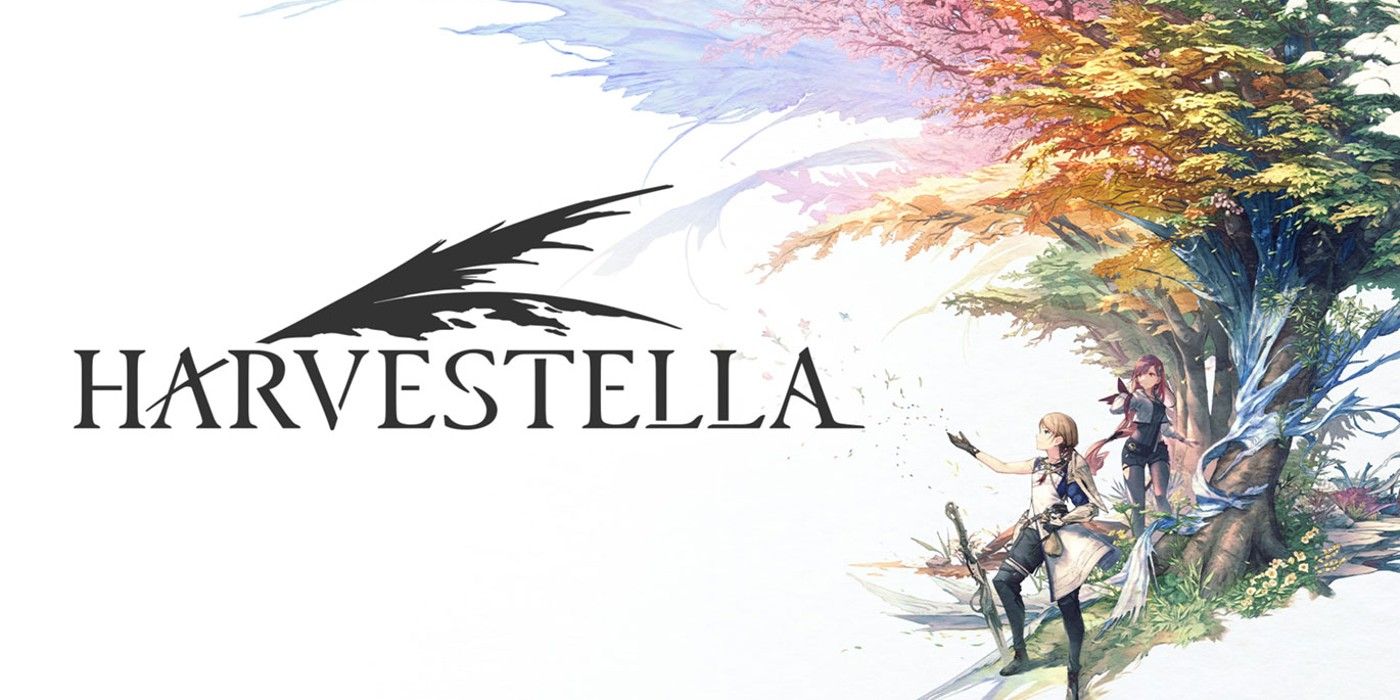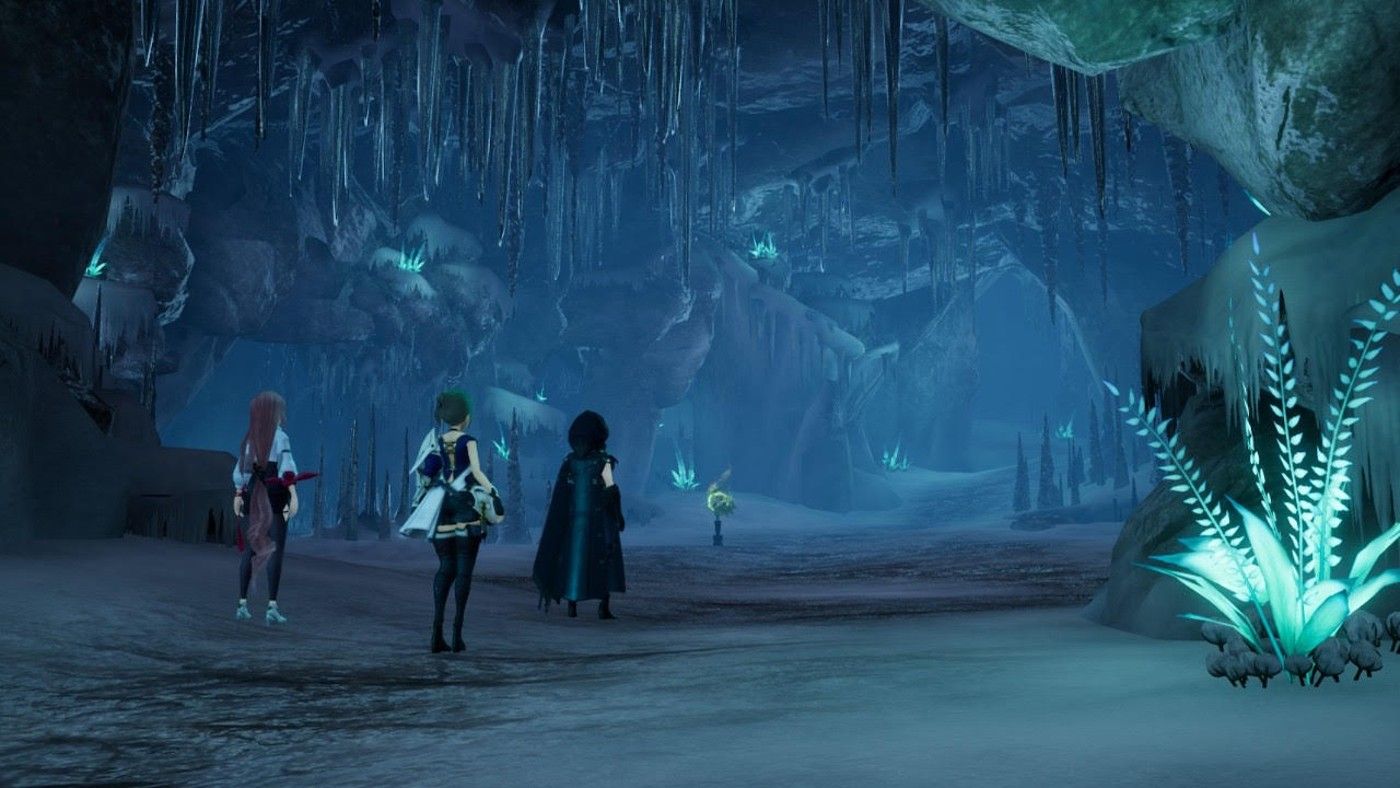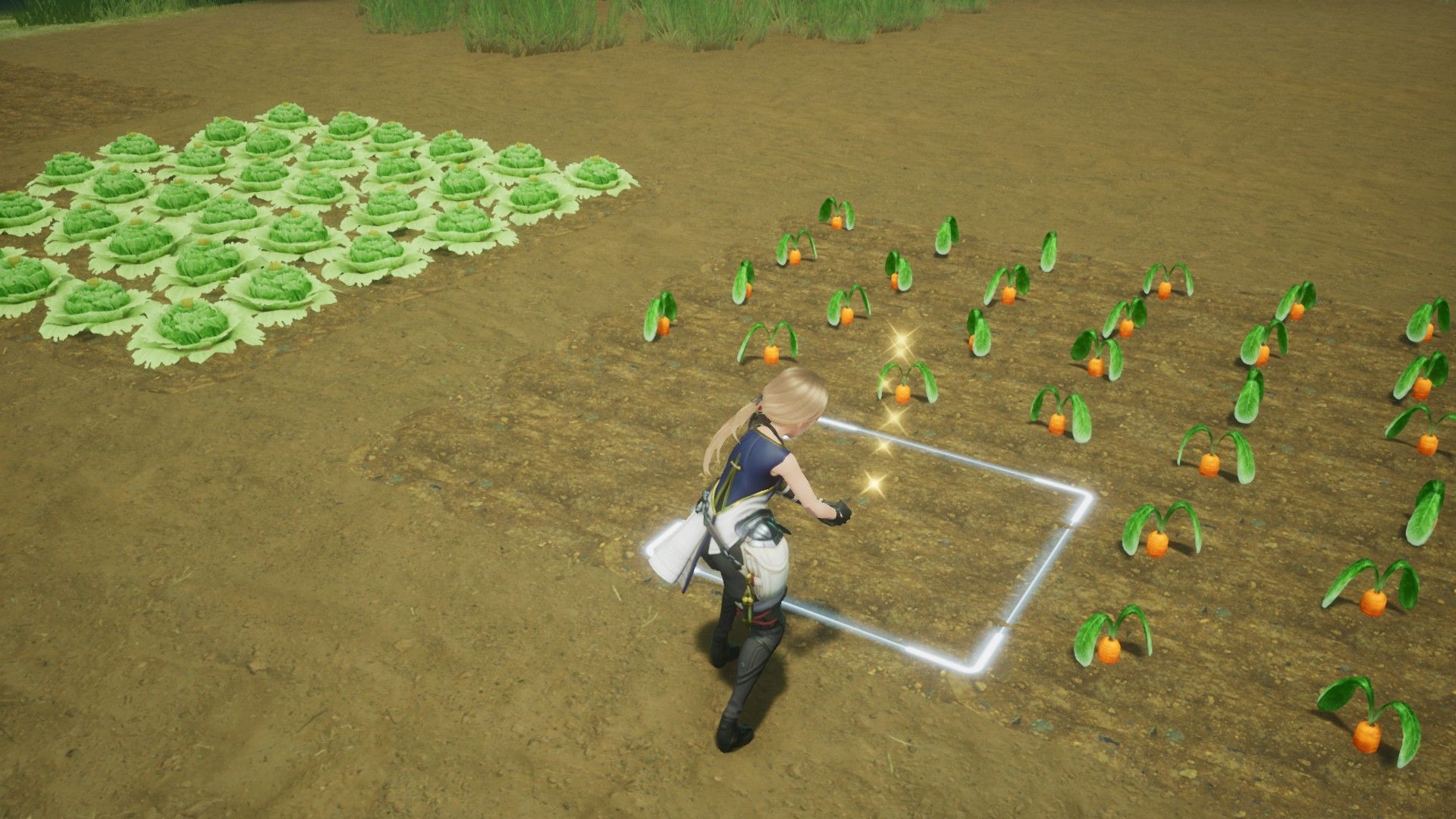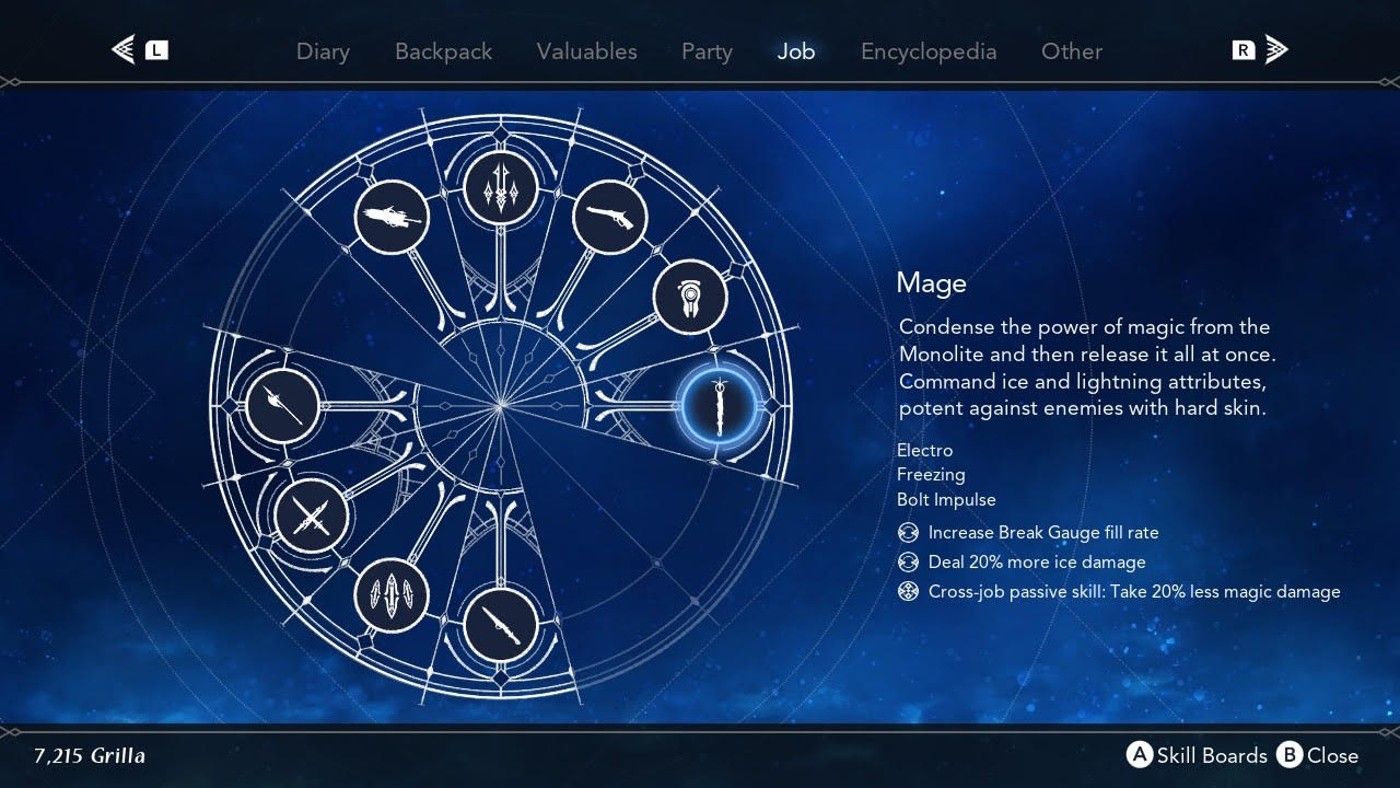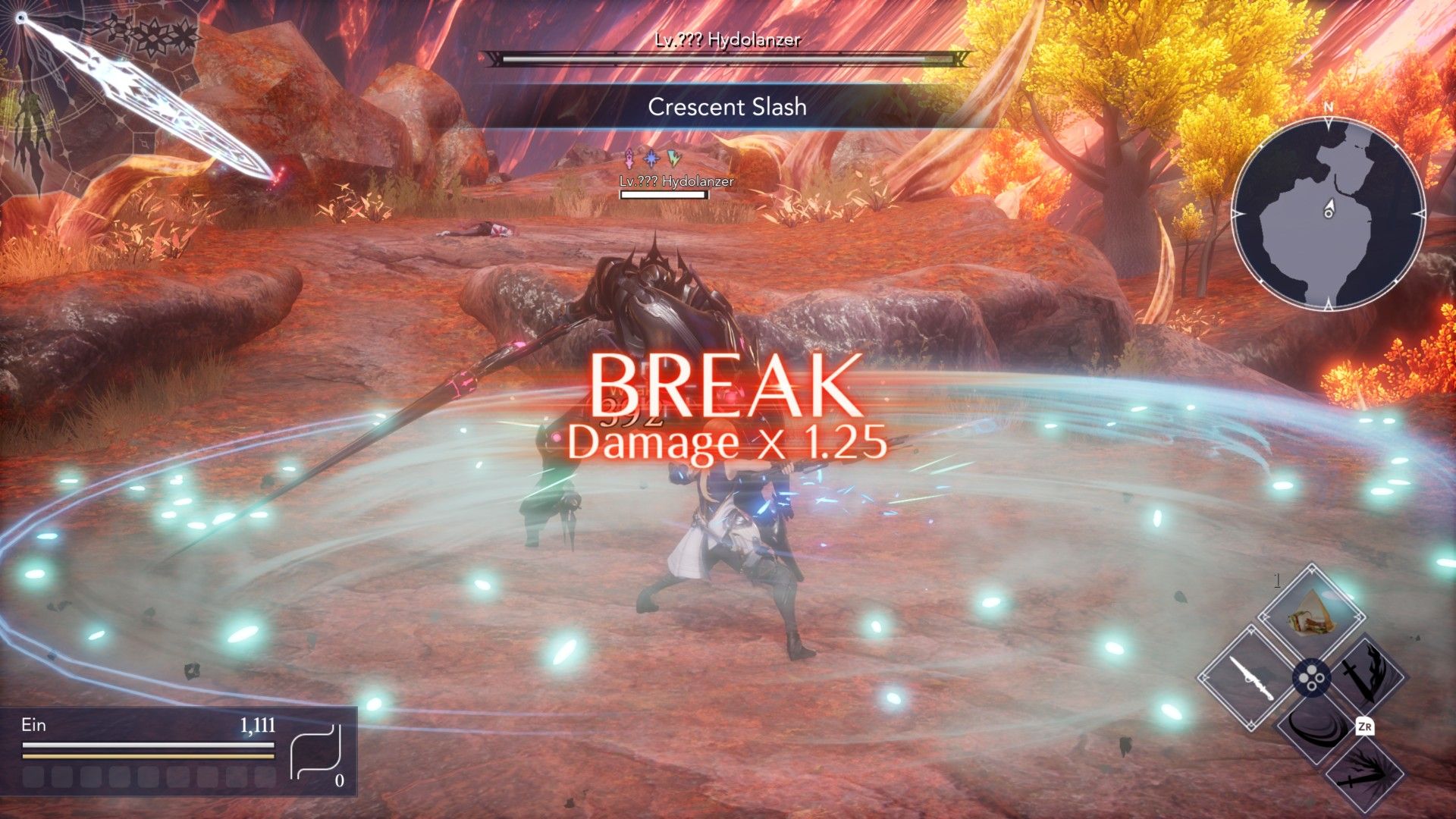Harvestella combines simulation and JRPG elements within a beautiful environment to create a narrative journey that's deeply enjoyable, but some shallow mechanics and performance issues hold the game back from its full potential. Players can farm, explore dungeons, build friendships, and fight alongside their party as they investigate the mysteries of the Seaslight, four giant crystals that control the planet's seasons. While Harvestella exceeds in its story and overall game loop, it's hard not to compare the title to similar games that have presented much more in-depth versions of what Harvestella sets out to do.
In many ways, Harvestella draws inspiration from Final Fantasy and other JRPGS when it comes to its storyline, including the ever-popular amnesia trope. Harvestella's protagonist begins the game being rescued by a doctor after passing out during an event called Quietus, a time period between seasons in which the air fills with a deadly dust. Upon awakening, the player character has no recollection of their identity besides their name, and learn that something about them has prevented the demise that typically accompanies venturing outside during Quietus. From there, players will set out to discover the secrets of Quietus, the Seaslight, and the universe itself.
Before the main story begins, players will be able to make small changes to the protagonist's appearance, adjusting things like eye and hair color. However, those looking for a robust character creator will be disappointed - the protagonist's appearance is largely set in stone. Like the upcoming Story of Seasons, a non-binary character option is available in Harvestella, a welcome change that's long overdue for player characters.
The overarching storyline of Harvestella is far too complex to summarize neatly, but the general premise surrounds the protagonist and a character named Aria - a scientist who has mysteriously ended up in the past and is searching for a way back home - teaming up to investigate odd events tied to the Seaslight. Along the way they'll meet several other main characters who will help them along their journey, all of which are incredibly well fleshed-out people with backstories that may even elicit some tears from the player. Several of these characters can be romanced in Harvestella as well, but this unfortunately doesn't come into play until the player has beaten the entire main storyline.
Sadly, this depth of character doesn't extend to those outside those in the Harvestella protagonist's inner circle. Even in Lethe, the town where players take up residence, many townspeople that are interacted with on a near-daily basis never even receive a first name. This is incredibly odd for a game trying to emulate parts of the simulation genre, and detracts somewhat from overall immersion. Similarly, throughout all the world's cities, the same exact character models appear incredibly often, and since many aren't given names it can be easy at first glance to assume someone is the same character from a previous side quest, only for them to be a total stranger. There are no town events, either, save for Quietus, which just results in everyone staying inside.
The farming basics of Harvestella also eschew the those typical of a simulation title in several instances, but not always in interesting ways. Like many games, players will grow crops they can either sell directly or process with a variety of machinery, but the way these things are upgraded is not done via the usual routes. As players progress through addressing the problems at each season's Seaslight, they will recruit fairies to come live on the farm which will unlock new abilities, like planting or watering multiple plants at once, as well as new planting biomes.
Instead of upgrading tools via resources at a blacksmith, players will earn upgrades through reaching task milestones similar to Animal Crossing's Nook Miles for each fairy, like harvesting a certain amount of crops. This can sometimes be quite frustrating - for example, the giant rocks that litter players' farms and largely impact crop layouts can't be destroyed until the fairy from the final Seaslight chapter is recruited, many hours into the game. Additionally, the fairies have a very small amount of canned dialogue that will be repeated each time one of their associated tasks is done, meaning a player watering their crops could very well hear the same sound bite over a dozen times.
Cooking is a surprisingly large and fun part of Harvestella, used to recover stamina and HP while exploring dungeons. Players with a full stomach will naturally regain stamina, and breaks can be taken with party members while dungeon crawling to eat a meal together. Depending upon the food, this will sometimes unlock unique characters moments as well. Select regional dishes can also be brought to inns across the world in exchange for hefty sums of in-game currency Grilla, incentivizing crop variation for recipes in a way many simulation games do not.
Players will explore an increasingly-large world utilizing an interesting overworld map mechanic, and travel within each location is made exponentially easier through the use of fast travel structures called Motus Monolites. The game's story will take players through a myriad of different maze-like dungeons that are as much about puzzling a way through as they are monster fights. While the game doesn't feature any skills to be leveled - a disappointing omission - Harvestella instead features Jobs like Sky Lancer, Assault Savant, and Mage, which are its version of fighting classes. These are unlocked as new characters are introduced, and can be upgraded by earning Job Points via defeating enemies - however, each of these Job's skill trees are quite simplistic and easy for players to make their way through.
While enemies do each have their own Job-specific weaknesses, combat as a whole is incredibly simplistic, with little move variance and a large reliance on button mashing. Boss fights in Harvestella are where teamwork with one's party really shines, where with enough damage players can achieve a Break - where bosses take additional damage temporarily - or Double Break, which allows a special team move to be activated. Players will also encounter FEARs, which are more powerful monsters that lurk the hallways of dungeons and must be carefully avoided unless players are well-prepared for what's essentially a small boss fight in Harvestella.
The world of Harvestella is absolutely beautiful, with unique towns and gorgeous nature locales that can be genuinely awe-inspiring. Unfortunately, this beauty is somewhat diminished by issues in other areas, as clunky and awkward character animations in cut scenes and frame rate drops plague the title throughout. However, the game's absolutely incredible and evocative soundtrack is its saving grace, and makes it easier to overlook these issues when they occur.
Harvestella is a game full of immersive environments, beautiful music, and an engaging and meaningful narrative for both its world and main characters, which is enough to redeem the game's more mediocre elements. There are several areas of Harvestella, like it farming, animations, and social simulation elements that would have greatly benefited from more depth and care put into them, but despite these flaws the game manages to be incredibly addictive. It's easier to notice these issues when comparing Harvestella to games like Rune Factory, but standing on its own Harvestella is a fairly strong title that's worth players' time. It may not be perfect, but it's very easy for players to fall into a "just one more day" loop in Harvestella nonetheless as they uncover the mysteries of its universe.
Harvestella is available for Nintendo Switch and PC via Steam. Screen Rant was provided with a Nintendo Switch code for the purpose of this review.

